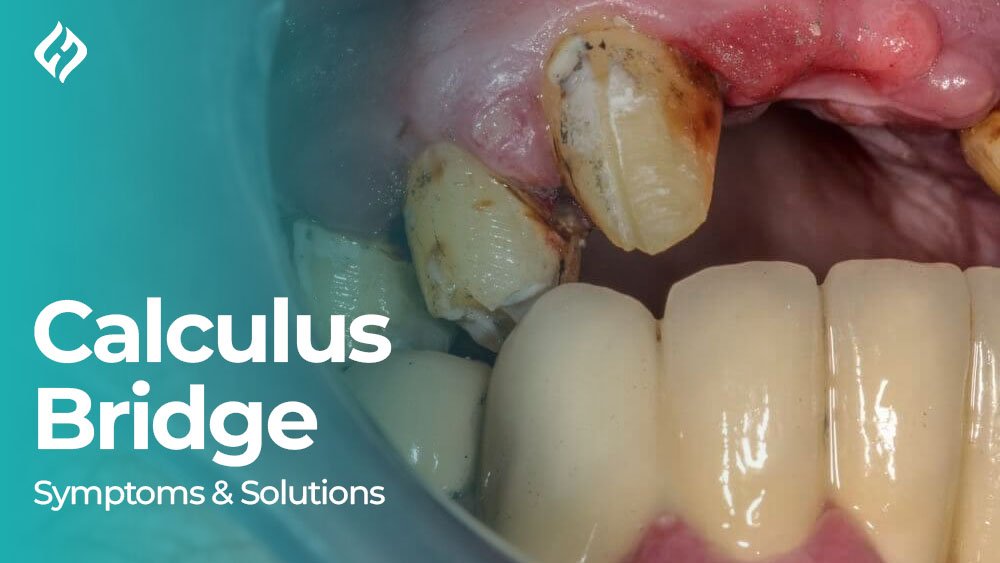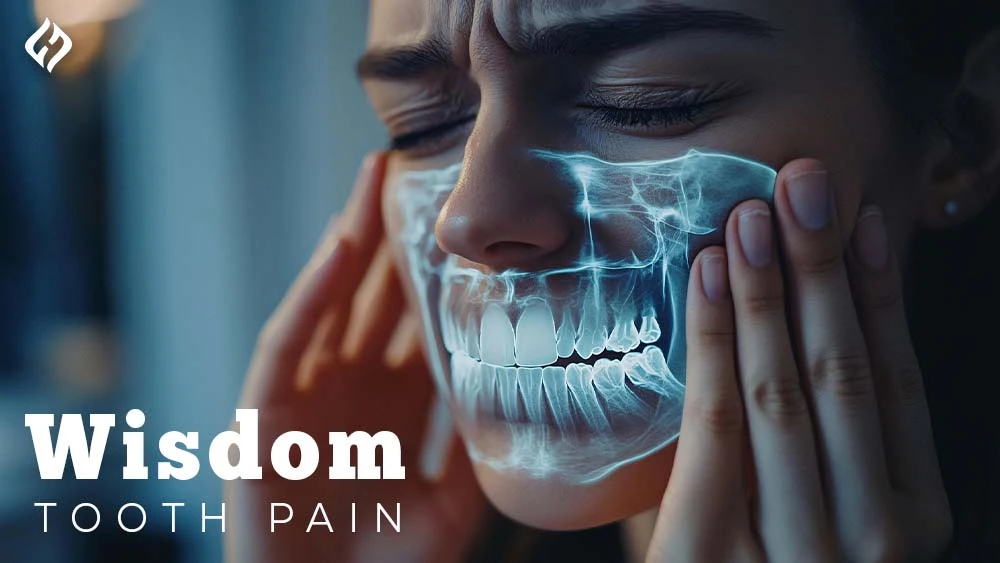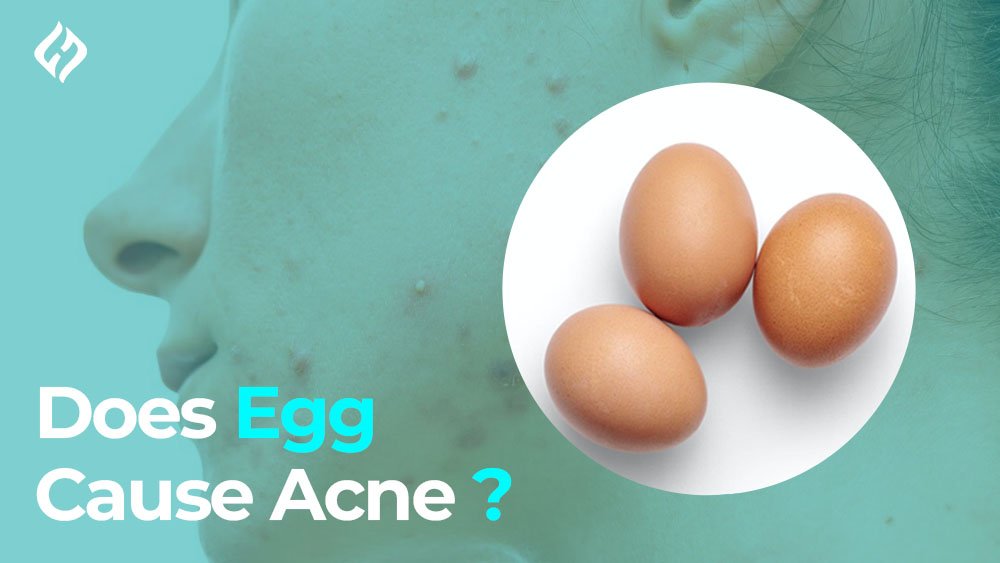Do you want to keep your smile beautiful? If you’re going to maintain your beautiful smile, you have to clean your teeth properly and visit the dentist regularly. Otherwise, you face a lot of problems with your teeth.
If you don’t clean your teeth properly through the precautions of a dental specialist, the plague forms on your teeth, and after a time, the plague becomes harder and turns into the form of a calculus bridge. If it is not removed properly through brushing at home, you must visit a dentist for proper cleaning.
What is Calculus Bridge?
When Tartar is holding your teeth in place, this is often sometimes called a Calculus bridge, and in dental terms, it is also known as Tartar. Tartar is a mineralized hardened plaque that sticks to the surfaces of the teeth. A dental bridge is specifically when the Tartar is stuck across multiple teeth, oftentimes on the lower front teeth where you can see it.
A Calculus Bridge can make it difficult to distinguish between each tooth since it covers the teeth, starting at the gums all the way up to the biting surfaces on the teeth. There are different levels of calculus. Some of the levels are more severe than others, but all tend to start as plaque that is not properly removed with daily brushing or avoidance of professional dental cleaning.
So we tend to see these in those people who haven’t visited any dentist for years and years, and that’s why their lower front teeth on the tongue side are a common area for plaque to build up due to various reasons.
Reasons why Plague, Tartar, or calculus Bridge is formed
- Because It is a difficult area to reach for a toothbrush, salivary glands can increase the risk of its buildup.
- Plague tends to build up more on the front teeth of those who often breathe through their mouth.
- If plaque is not removed through brushing, it will harden day by day and turn into the form of calculus, and once it is formed, it will never be removed properly at home; a dentist must remove it.
How plague is turned into a calculus Bridge
Have you ever seen a calculus bridge or dental calculus? In dental terms, it is also known as Tartar, and Tartar is a hardened Plaque that sticks to the surface of teeth. It covers the gums of the teeth on the tongue side.
It becomes harder and harder and turns into the form of plague (a harder or sticky material). If you don’t visit any dentist, it is never removed through home remedies or at home.
How can we diagnose the Calculus Bridge?
Symptoms
We diagnose the dental bridge when we see Yellowish or black stains on the teeth. It doesn’t look good, and teeth are turned into a pale yellowish color. The breath should be bad, or when you breathe, you exhale a bad smell from your mouth. Nobody wants to sit with you. Your mouth excretes a very bad smell.
That’s why you lose the confidence to communicate with someone. Your gums should be red, swollen, or bleeding. You feel so much pain in your gums whenever you brush your teeth, and you see a very hard coating formed on your teeth or gum line that covers the lower front teeth of your mouth.
Causes of dental calculus
- Insufficient oral hygiene: If you don’t brush your teeth regularly or brush for less than two minutes, it can also lead to cavities or teeth problems.
- Poor diet: Your daily meal matters a lot. If you eat too many sugary foods, it also leads to tooth decay or cavities.
- Teeth grinding: Some people don’t realize they grind their teeth, and they also do this process while they are sleeping. Grinding teeth also leads us to dental calculus.
- Overbrushing: Don’t brush your teeth too much or with a hard brush. It will cause bleeding of your gums, and many problems with tooth weakness arise due to this.
- Avoiding the dentist: It is the main cause of the calculus bridge. People do not visit the dentist for years and years, and that’s why the Tartar or dental calculus is formed on the front teeth.
Also Checkout: Tooth Pain and Headache: The Hidden Connection You Must Know
Side Effects of a Calculus Bridge on Your Teeth
The common side effects of a calculus bridge on your teeth are
- Halitosis is a sign of bad breath, and it always happens when your teeth have a tartar or dental bridge problem. It is a very unpleasant breath odor that is present as a result of anxiety in those people who face this problem. It is from the inside of the mouth, which is such an unpleasant smell that is present on the breath.
- Gingivitis is not a destructive disease that causes the inflammation of the gums. These are the early signs of gum disease. Through this, people come to know there is a problem with their teeth.
- Tooth Decay and Cavities The Tartar or calculus plays a vital role in dental damage. It is very dangerous for teeth health. Daily meals play a crucial role because if you eat sugary food at a high level, many problems arise, like tooth decay or cavities. The risk of tooth loss is so high due to Tartar or calculus.
Calculus Bridge Removal
Calculus Bridge is removed at home using various methods, but it is not removed permanently or neatly. Professional cleaning is needed for this process. But here we discuss: can we clean Tartar at home? So many people ask if we can remove Tartar at home.
No, and right away, I need to say you cannot safely remove Tartar from your teeth, but plaque can be removed safely at home. So, let’s start with the difference between plaque and Tartar, how to remove plaque at home, and why you can’t remove Tartar at home. So, plague is the white or sometimes yellow if stained sticky stuff sits on your teeth, and it can be properly removed at home simply with daily brushing.
So, yes, you can and should remove the plague at home. Sometimes, people use water flossers and inner brushes in the home care routine, especially if they build up plaque quickly. It’s important to know that plague is the thing that is converted into Tartar if it’s efficiently removed within 24 to 72 hours of plague sitting on your teeth, meaning you have skipped a day or brushing or day that sticky plague now turns into a hardened clot. It forms into something we call a tartar or calculus.
It is super hard, like a rock, and it sticks to your teeth; if it sticks too long, you face so many problems like bleeding gums, tooth decay, halitosis, etc., and that calculus is never removed from your teeth at home. You must do a professional cleaning for that calculus removal and visit the dentist.
Professional cleaning is the most effective method for calculus removal. The dentist does scaling and Root planning for the permanent removal of calculus. The steps included in the Scaling or root planning include Examination; in this, the dentist evaluates the condition of the teeth and the amount of tartar buildup.
The next step is Scaling; in this step, ultrasonic scalers are used to break and remove Tartar or calculus from the teeth that stick below the gumline. Then, Root planing is done in which roots are smoothened to prevent future plaque accumulation. After root planing, Polishing is done on the teeth to restore shine and smoothness. Then, fluoride treatment is done to strengthen the enamel.
How can we prevent a Calculus bridge from forming on your teeth?
Prevention
- Preventing a calculus bridge requires consistent oral hygiene. Here are some ways that we can avoid to prevent our teeth from dental calculus:
- Maintain proper Hygiene: Brush your teeth twice a day with fluoride toothpaste and brush the teeth for at least 2 minutes.
- Floss daily because the brush cannot reach the center of teeth, and plaque is formed.
- Always use antiseptic mouthwash, which prevents you from plaque buildup.
- Always use Tartar control products like pyrophosphates or zinc citrate to slow the formation of the Tartar or calculus. Regularly visit your dentist for a regular check-up.
- Schedule your meeting with the dentist every 6 months to remove plaque, and if you follow this, you will never be faced with a problem of Tartar or calculus bridge.
- Maintain a healthy diet that includes no sugary foods because sugar is the main cause of Tartar.
- Drink plenty of water because it helps to wash away the food that is stuck between your teeth.
- Avoid tobacco or smoking because it increases the risk of tartar formation. If you follow these preventive measures, you can maintain healthier teeth and gums, and you will always keep your beautiful smile.
Takeaway
A calculus bridge is also known as Tartar, and it forms when plaque on your teeth becomes hardened due to poor hygiene, and it becomes more difficult to remove with brushing. With time, it sticks to your teeth, especially around the gum line, and it causes a range of dental issues like bad breath, gum inflammation, cavities, and many more.
Common risk factors arise due to poor brushing and not brushing your teeth for 2 minutes. Plague can be removed at home, but for the removal of Tartar, we need a professional cleaning from a dentist, such as Scaling and root planning. To prevent your teeth from Tartar, you have to maintain your oral hygiene.
It is beneficial to brush your teeth twice a day, floss regularly, use mouthwash, avoid smoking, and visit the dentist every 6 months. Maintaining a healthy diet, drinking plenty of water, and using tartar control products can help to keep your smile beautiful and free from Tartar.
Call to Action
“Are you ready to maintain your beautiful or healthy smile? If yes, then schedule your dental cleaning with your dentist today, ask about calculus bridges, and recover your healthy teeth.”
Also Read: How Long Until a Tooth Infection Kills You?















